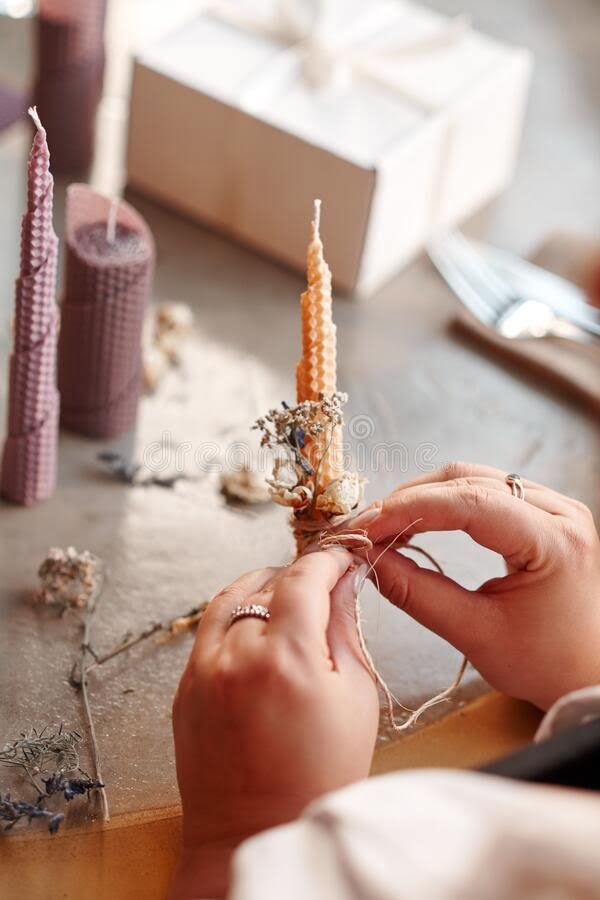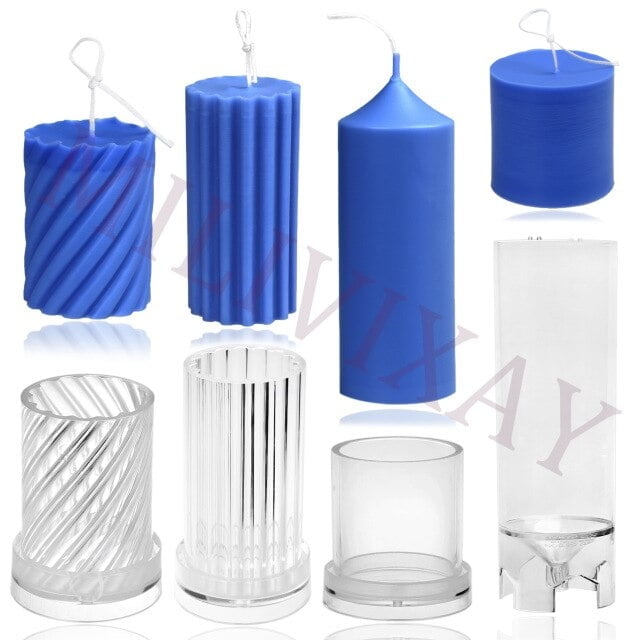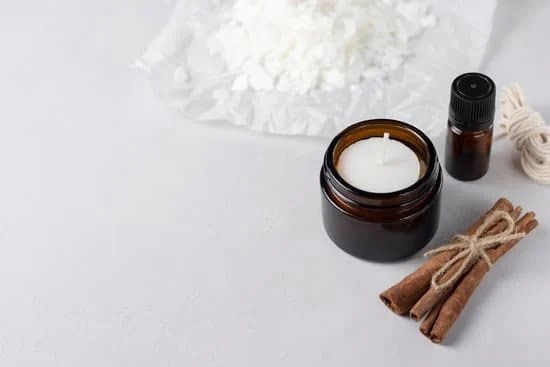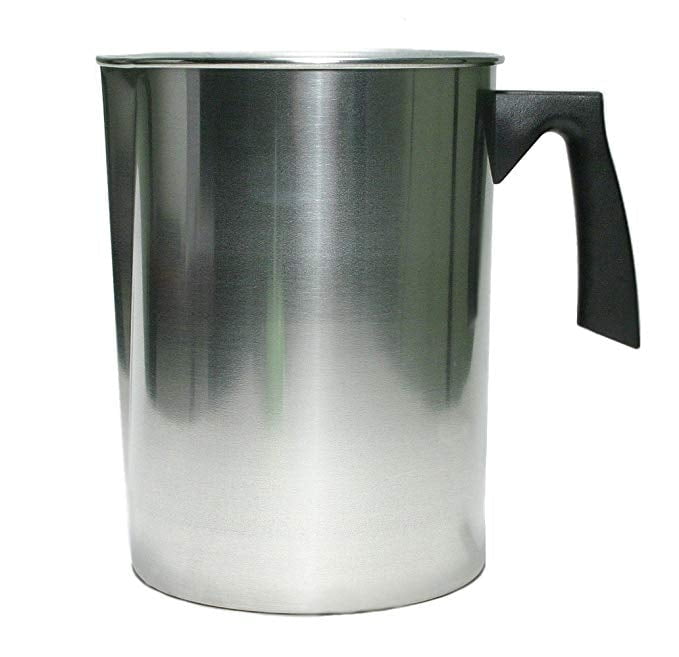Welcome to the world of soy candle making, where beauty and simplicity combine to create a truly delightful experience. In this tutorial, we will explore the art of making your own soy candles, a craft that has been steadily gaining popularity in recent years. Not only is it a rewarding and fulfilling hobby, but it also allows you to customize your candles to suit your preferences and enjoy the benefits that homemade soy candles provide.
So why are soy candles becoming increasingly popular? First and foremost, soy wax is a natural alternative to the commonly used paraffin wax. Derived from soybean oil, it is biodegradable, non-toxic, and doesn’t release harmful toxins when burned. Moreover, soy candles have a longer burn time, produce minimal soot, and provide a cleaner and more even burn compared to traditional paraffin candles.
The benefits of making your own soy candles go beyond their environmental impact. By crafting your own candles, you have control over every aspect – from choosing high-quality ingredients to customizing scents and designs. It’s an opportunity to unleash your creativity and put a personal touch on every candle you make. Plus, making soy candles can be a cost-effective way to indulge in luxurious fragrances without breaking the bank.
So get ready to embark on an enchanting journey into the world of soy candle making. In the next sections of this tutorial, we will guide you through all the essential steps involved in creating your very own handcrafted soy candles.
You’ll learn about the necessary materials and equipment needed for this craft, as well as where to find them. We’ll also delve into detailed instructions on handling wax safely and explore various techniques for adding fragrances or personalizing your creations.
Grab your apron and let’s dive into this exciting process – soon you’ll be basking in the warm glow of your own soy candles, not only proud of the magnificent result but also grateful for the therapeutic experience that candle making provides. So let’s get started on this journey and uncover the wonders of soy candle making together.
Getting Started
To successfully embark on your soy candle making journey, it’s important to gather all the necessary materials and equipment. Here is a list of essential items you will need to get started:
Materials
– Soy wax: Look for high-quality, 100% natural soy wax flakes. Avoid blends that contain additives or chemicals.
– Fragrance oils: Choose scent options that are specifically formulated for candle making. Experiment with different fragrances to find your favorites.
– Wicks: Opt for cotton wicks without any metal core for a clean and even burn.
– Containers: Select heat-resistant glass jars or tins in various shapes and sizes to hold your candles.
– Dye chips (optional): If you wish to add color to your candles, choose dye chips made specifically for soy wax.
Equipment
– Double boiler or melting pot: A double boiler ensures safe and controlled melting of the wax. Alternatively, you can use a pouring pitcher designed for candle making.
– Thermometer: Essential for monitoring the temperature of the melted wax to achieve optimal pouring conditions.
– Heat-resistant stirring utensils: Use stainless steel or heat-resistant plastic spoons or spatulas for stirring and blending fragrance oils into the wax.
– Scale: Accurate measurement of ingredients is crucial, so invest in a digital scale that measures in grams or ounces.
– Wick holders or clips: These will help keep the wick centered while pouring the wax.
Finding High-Quality Ingredients and Supplies
It’s recommended to purchase your soy wax, fragrance oils, wicks, and other supplies from reputable suppliers who specialize in candle-making supplies. Look for suppliers that offer high-quality materials that meet safety standards. You can find these online through dedicated websites or even at local craft stores.
Additionally, consider supporting small businesses and local artisans who create their own handmade soy candle supplies. Not only will you be able to find unique and personalized materials, but you will also contribute to the growth of independent crafters in your community.
With all these materials and equipment in hand, you are now ready to move on to the next steps: creating your very own soy candles.
Step-by-Step Guide
Making your own soy candles can be a fun and rewarding experience. With just a few simple steps, you can create beautiful and fragrant candles that are perfect for gifts or to enjoy in your own home. Follow this step-by-step guide to learn how to make soy candles.
Preparing the Work Area
Before you begin making soy candles, it is important to properly prepare your work area. This will ensure a safe and organized candle-making process. Here are some steps to follow:
- Clean and sanitize your work surface: Wipe down your work surface with a clean cloth and sanitizer to remove any dust or debris.
- Gather all necessary materials: Make sure you have all the materials and tools you need within easy reach.
- Protect your work surface: Place newspaper or a plastic tablecloth on your work surface to catch any spills or drips.
- Set up a double boiler system: Fill a large pot halfway with water and place it on the stovetop. Put the pouring pitcher or heat-resistant container inside the pot, creating a double boiler system.
Handling Wax and Fragrance Oils
When it comes to working with wax and fragrance oils, proper handling is key to achieving great results. Here are some tips for working with these ingredients:
- Melt the wax: Place the desired amount of soy wax flakes into the pouring pitcher or heat-resistant container in the double boiler system. Heat on low to medium heat until the wax is completely melted, stirring occasionally.
- Add fragrance oil: Once the wax is melted, add your chosen fragrance oil according to the recommended usage rate. Stir gently for even distribution.
- Avoid overheating: Be cautious not to overheat the wax as this can affect the quality of your candles. Monitor the temperature using a thermometer and ensure that it remains within the recommended range.
- Keep fragrance oils on hand: Have a variety of scent options available so you can experiment with different combinations. This will allow you to create unique and personalized soy candles.
Choosing the Right Wicks and Containers
The type of wick and container you choose for your soy candles can greatly impact their performance. Here are some factors to consider:
- Select the appropriate wick size: The size of the wick will depend on the diameter of your candle container. It is important to choose a wick that is suitable for the width of your container. Too small of a wick may result in poor burn quality, while too large of a wick can cause excessive smoke or uneven burns.
- Consider the material of the wick: Cotton wicks are commonly used for soy candles due to their clean burning properties. They also provide a consistent flame and good scent throw.
- Choose high-quality containers: Opt for heat-resistant glass or tin containers specifically designed for candle-making. Ensure that they are clean, dry, and free from any cracks or imperfections before pouring in the wax mixture.
Pouring and Cooling Techniques
The pouring and cooling process is vital in creating beautiful soy candles. Follow these techniques for perfect results:
- Pouring technique: Slowly pour the melted wax into your chosen candle container, taking care not to spill or drip onto surrounding surfaces. Leave some space at the top (approximately 1/2 inch) to allow room for expansion during cooling.
- Allow for proper cooling time: It is crucial to let your candles cool slowly and completely before moving them. This helps prevent any potential issues such as sinkholes or tunnels in the wax.
- Trim the wick: After the candles have cooled and solidified, trim the wick to approximately ¼ inch before lighting. This will ensure a clean burn and prevent excessive smoke.
By following these step-by-step instructions, you can confidently make your own soy candles. The beauty of creating candles yourself is that you can customize them to suit your preferences and style. Experiment with different scents, colors, and containers to create unique and personalized soy candles that will bring warmth and coziness to any space.
Safety First
When it comes to making soy candles, safety should be a top priority. Working with hot wax and various tools can pose potential hazards if not handled properly. In this section, we will discuss the necessary precautions and guidelines to ensure a safe candle making experience.
Firstly, it is vital to prepare your workspace appropriately. Clear any clutter and ensure you have enough space to work comfortably. Lay down newspaper or a protective covering on your work surface to catch any spills or drips. Make sure that you have proper ventilation in the room to prevent inhaling any fumes from the melting wax.
Next, let’s talk about handling hot wax. It is crucial to use caution when working with melted wax as it can cause serious burns. Always remember to wear heat-resistant gloves and long sleeves while pouring the hot wax into containers. Keep a fire extinguisher nearby in case of emergencies and do not leave the melting wax unattended.
Additionally, there are some common mistakes that beginners often make during the candle making process. One of these errors is overheating the wax, which can result in discoloration or even combustion. Follow the instructions for heating the wax carefully and avoid exceeding recommended temperatures.
Another mistake is using improper containers that are not suitable for holding hot melted wax. Ensure that you choose containers specifically designed for candle making, such as heat-resistant glass jars or tin containers. Using inappropriate containers may lead to cracking or shattering when exposed to high temperatures.
By following these safety precautions and avoiding common mistakes, you can enjoy a safe candle making experience while creating beautiful soy candles for yourself or as gifts for others. Remember that safety should always come first when working with hot materials like wax, so take your time and proceed with caution at all times.
Adding Fragrance
Adding fragrance to soy candles is a crucial step in the candle making process as it gives the candles their unique aroma. In this section, we will explore different types of fragrance oils for soy candles, how to mix and match scents for unique aromas, and techniques for measuring and achieving the desired scent throw.
When it comes to fragrance oils for soy candles, there are a wide variety of options available. Essential oils, which are derived from natural plant sources, are a popular choice for those seeking a more natural and holistic approach. They offer a wide range of scents including floral, citrus, herbal, woody, and spicy notes. It is important to note that not all essential oils are suitable for candle making, so be sure to check their flashpoints before using them.
Another option is synthetic fragrance oils, which are specifically formulated for candle making. These oils often have a stronger scent throw compared to essential oils and come in a vast array of scents ranging from classic favorites to unique blends. They are generally more affordable than essential oils and can be easier to work with due to their consistency.
To create unique aromas for your soy candles, you can experiment with mixing different scents together. This allows you to customize the fragrance according to your preferences or create signature scents for special occasions or events. When blending fragrances, start with small quantities to test the combination before committing to larger batches. Keep track of the ratios used so that you can reproduce successful blends in the future.
In order to achieve an optimal scent throw in your soy candles, it is important to measure the fragrance oil accurately. Too little fragrance may result in weak or barely noticeable scents while adding too much can impact burn quality and even cause smoking or sooting issues.
A general guideline is to use around 6-10% fragrance oil by weight of the total wax used. However, it is recommended to refer to the specific recommendations provided by the fragrance oil manufacturer for best results.
| Type of Fragrance Oils | Characteristics |
|---|---|
| Essential Oils | Natural plant-derived scents; wide range of options including floral, citrus, herbal, woody, and spicy notes. |
| Synthetic Fragrance Oils | Formulated specifically for candle making; extensive variety of scents; often stronger scent throw; |
Decoration and Personalization
Adding Color to Your Candles with Natural Dyes
One of the most exciting aspects of making your own soy candles is the opportunity to customize and personalize them according to your taste and preferences. Adding color to your candles can not only enhance their aesthetic appeal, but also create a unique ambiance when they are lit. While synthetic dyes may be readily available, using natural dyes can provide a more eco-friendly and sustainable option.
There are several natural ingredients that can be used as dyes for soy candles. For example, herbs such as turmeric and beetroot powder can produce vibrant yellow and pink colors respectively. Similarly, spices like cinnamon or cacao powder can add warm brown tones to your candles. To obtain the desired color, simply mix small amounts of these natural ingredients into the melted wax before pouring it into the containers.
Using Embeds, Dried Flowers, and Other Decorative Elements
If you want to take your candle customization to the next level, consider incorporating embeds, dried flowers, or other decorative elements into your soy candles. Embeds are small objects that are placed inside the wax before it hardens. This could be anything from seashells or dried fruit slices to beads or small figurines. When the candle burns down, these embeds become visible and create an interesting visual effect.
Dried flowers can also be a beautiful addition to your soy candles. You can either press fresh flowers between heavy books for a few days or purchase pre-dried ones from craft stores. Before pouring the melted wax into containers, carefully place a few dried flower petals on the sides or at the bottom of each container. As the wax cools and solidifies around them, these delicate floral accents will give your candles a charming touch.
Experimenting with Textures and Finishes for a Personalized Touch
Textures and finishes can greatly enhance the overall look and feel of your soy candles. There are various techniques you can try to achieve different effects. For example, if you want a rustic texture, consider rolling or dipping your cooled candles in crushed herbs, such as rosemary or lavender. This will create a textured surface that adds an organic and earthy touch to your candles.
Alternatively, if you prefer a smooth and glossy finish, you can melt some extra wax and pour a thin layer on top of your cooled candles. This technique, known as “glazing,” gives the candles a polished appearance while also providing a protective layer. You can also experiment with different finishes by adding shimmer powders or flakes to the melted wax before pouring it into the containers for an elegant touch.
By exploring different decoration techniques and personalizing your soy candles, you can create unique pieces that reflect your own style and creativity. Whether it’s using natural dyes for color, incorporating embeds or dried flowers for added interest, or experimenting with textures and finishes for a personalized touch, the possibilities are endless when it comes to customizing your handcrafted soy candles.
Troubleshooting
Understanding and addressing common problems in soy candle making
Soy candle making, like any craft, can come with its own set of challenges. However, with a little troubleshooting know-how, these issues can easily be resolved. Understanding the common problems that may arise during the candle making process will help you create consistently beautiful and high-quality candles.
One common issue that soy candle makers encounter is tunnelling. This refers to a hollow cavity forming down the center of the candle, leaving wasted wax on the sides. To prevent tunnelling, it is important to properly choose the right wick size for your container.
A wick that is too small may result in poor melt pools and tunnelling, while a wick that is too large can cause excessive heat and uneven burning. Experimenting with different wick sizes will help you find the perfect fit for your specific container.
Another problem that often arises is frosting, which appears as a white or cloudy haze on the surface of the candle. Frosting occurs when the wax cools too quickly or when there are temperature fluctuations during cooling. To minimize frosting, ensure that your workspace is free from drafts and maintain a consistent temperature throughout the cooling process. Additionally, using additives such as stearin or pouring at a slightly higher temperature than usual can help reduce frosting.
Tips for troubleshooting fragrance issues and uneven burns
Fragrance issues can also occur in soy candles if not properly addressed. One common problem is lack of scent throw, where the candle does not emit enough fragrance when burned. This can be caused by using an insufficient amount of fragrance oil or by adding it at an incorrect temperature. To avoid this issue, always measure your fragrance oil accurately and add it to your melted wax at the recommended temperature stated by the manufacturer.
Uneven burning is another challenge faced by soy candle makers. This occurs when certain areas of the candle burn faster than others, resulting in uneven melt pools and wasted wax. To troubleshoot this issue, ensure that your wick is centered properly in the container and trimmed to an appropriate length. Trimming the wick before each use will also help maintain a consistent and even burn.
Solutions for achieving consistent results in each candle
Consistency is key when it comes to soy candle making, and there are several techniques you can employ to achieve it. Firstly, it is important to keep meticulous records of your measurements, temperatures, and procedures for each batch. This will allow you to identify any inconsistencies or variations between batches and make the necessary adjustments.
Additionally, investing in a good quality thermometer will help you monitor the temperature of your melted wax accurately. Maintaining a consistent temperature throughout the melting and pouring process will result in more predictable outcomes.
Sustainability and Eco-Friendliness
Soy candles offer more than just a beautiful and fragrant ambiance. They are also a greener alternative to traditional paraffin candles, making them the perfect choice for environmentally conscious individuals. In this section, we will explore the sustainability and eco-friendliness of soy candle making, along with tips on how to further reduce your carbon footprint.
One of the main reasons why soy candles are more environmentally friendly is because they are made from soybean oil, a renewable resource. Unlike paraffin candles, which are derived from petroleum, soy wax is biodegradable and non-toxic when burned. This means that soy candles produce less soot and do not release harmful chemicals into the air, improving the indoor air quality in your home.
In addition to using soy wax, you can further promote sustainability in your candle making by using sustainable packaging and recycled materials. Consider using biodegradable or recyclable materials for your candle containers and labels, reducing waste and minimizing their impact on the environment. There are also eco-friendly options available for wicks, such as cotton or wood wicks, which are free from lead or other harmful substances.
Supporting small soy candle businesses and local artisans is another way to contribute to sustainability in the industry. By purchasing from local makers who prioritize sustainable practices and use high-quality ingredients, you not only support local economies but also encourage ethical production methods. Additionally, consider sourcing your ingredients from suppliers who prioritize fair trade practices and work closely with farmers who practice sustainable agriculture.
By choosing soy candles and adopting sustainable practices in your candle making process, you can experience the joy of creating while also making a positive impact on the environment. Embrace this green side of soy candle making to create a brighter future for our planet.
Conclusion
In conclusion, making your own soy candles can be a rewarding and fulfilling experience. Not only do you get to enjoy the beauty and ambiance of these handmade creations, but you also have the satisfaction of knowing that you made them yourself. The popularity of soy candles is not without reason – their numerous benefits make them a great choice for both personal use and gifting.
By following the step-by-step guide provided in this tutorial, you have learned how to make soy candles from start to finish. From preparing the work area to choosing the right wicks and containers, you now possess the knowledge and skills needed to create perfect candles every time. Additionally, you have gained insights into safety precautions and troubleshooting techniques, ensuring that your candle-making journey is both enjoyable and safe.
As you continue on your soy candle making journey, don’t be afraid to unleash your creativity. Personalizing your candles with color, decoration, and unique scent combinations allows you to create one-of-a-kind pieces that reflect your style and personality. Experiment with different techniques, textures, and finishes to truly make each candle your own.
Finally, consider sharing your handcrafted soy candles with loved ones. Gifting these personalized creations not only spreads joy but also allows others to experience the beauty of homemade candles. Whether for birthdays, holidays, or just because occasions, these thoughtful gifts are sure to be appreciated.
In conclusion, embrace the satisfaction that comes from creating something beautiful with your own hands. Enjoy the process of making soy candles while exploring new techniques and experimenting with scents. With each candle you make, let it remind you of the fulfillment that comes from embracing your creative side and spreading light into the world through handmade treasures.

Welcome to my candle making blog! In this blog, I will be sharing my tips and tricks for making candles. I will also be sharing some of my favorite recipes.





